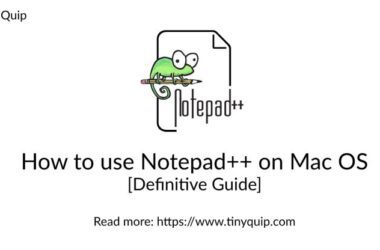You probably clean your desk, maybe even your phone, but how often do you clean your MacBook? And no, we’re not talking about just wiping the screen with your shirt sleeve. MacBooks are magnets for fingerprints, crumbs, dust, and smudges. Over time, all that grime can build up around the keyboard, ports, fan vents, and even the display. That’s where the best cleaning gadgets for MacBook come in handy.
In this guide, we’ve put together 15 must-have cleaning tools, kits, and accessories that make it easy to keep your MacBook looking like new. Whether you’re a student tossing it into a backpack every day or a remote worker spending hours on Zoom, a clean MacBook feels better to use, and it lasts longer, too.
We’re not just talking about a microfiber cloth and some spray. You’ll find cleaning pens for tight spaces, air blowers that won’t harm your ports, soft bristle brushes, gentle cleaning gels, and screen-safe sprays. Some are all-in-one kits; others are super portable tools that fit in your laptop bag.
Each pick is safe for use with Apple devices and offers great value based on what it does. We’ve also kept things simple; no overhyped gimmicks, just tools that work. Whether you’re cleaning your screen, removing dust from under keys, or polishing the body, these accessories have you covered. It all depends on how efficiently and safely you use them.
The Best Cleaning Gadgets and Accessories for MacBook

| Cleaning Accessory | Don’t Miss Deals |
|---|---|
| iCloth Screen Cleaning Wipes | Get Discounted Price |
| OXO Good Grips Sweep & Swipe | Get Discounted Price |
| Hagibis 5-in-1 Cleaning Brush Kit | Get Discounted Price |
| WHOOSH! Screen Cleaner Kit | Get Discounted Price |
| ColorCoral Universal Cleaning Gel | Get Discounted Price |
| Altura Photo Professional Cleaning Kit | Get Discounted Price |
| Giottos Rocket Air Blaster | Get Discounted Price |
| Screen Mom Screen Cleaner Kit | Get Discounted Price |
| OXO Electronics Deep Clean Brush Set | Get Discounted Price |
| Compressed Air Duster (Electric) | Get Discounted Price |
| ScreenSavrz Keyboard Cover | Get Discounted Price |
| Tech Armor Pro Cleaning Kit | Get Discounted Price |
| VSGO Electronic Cleaning Swabs Kit | Get Discounted Price |
| Elite Tech Gear XL Microfiber Cloths | Get Discounted Price |
| ColorCoral Cleaning Brush with Storage | Get Discounted Price |
Want more for your Mac?
Check out this detailed roundup guide on the best accessories for your MacBook. From Mac chargers to cleaning kits, we covered it all.
The Best MacBook Accessories | MacBook Pro & Air
1. iCloth Screen Cleaning Wipes
If you’re tired of streaks, smudges, and dust marks on your MacBook screen, iCloth Screen Cleaning Wipes are the easiest fix you’ll ever use. They’re compact, pre-moistened, and super handy when you don’t want to mess around with spray bottles or microfiber cloths. Each wipe is individually wrapped, which makes them perfect for stashing in your bag, desk drawer, or even your car for a quick screen touch-up whenever you need it.
What makes these wipes stand out is how safe they are. They’re made specifically for sensitive screens, including coated MacBook displays, so you don’t have to worry about scratching or damaging anything. They’re also lint-free, which means you won’t end up replacing one problem (smudges) with another (fibers all over the screen).
You don’t need much effort either. A single wipe usually gets the job done, especially if you use it gently in circular motions. They’re also super useful for other Apple gadgets like your iPhone or iPad and even camera lenses, glasses, and more.
They’re not reusable, which might be a downside for those who prefer eco-friendly options, and using multiple wipes in one go can add up in cost. Still, for the convenience they offer, they’re hard to beat.
The Good
- Individually wrapped and super easy to carry.
- Safe for all MacBook screens and doesn’t leave streaks.
- Also works well for phones, tablets, and other electronics.
The Bad
- It is not reusable, which may not suit eco-focused users.
- It can become pricey if used frequently or in bulk.
Also Read: How to Hide Files, Folders, & Icons on Mac Desktop
2. OXO Good Grips Sweep & Swipe Laptop Cleaner
Sometimes, all you need is a simple tool that just works, and that’s exactly what the OXO Good Grips Sweep & Swipe delivers. It’s a double-sided cleaner made for quick and easy maintenance of your MacBook’s screen and keyboard. On one side, you have a soft microfiber pad for wiping down your screen, and on the other, a retractable brush that’s great for brushing away dust, crumbs, or hair stuck between keys.
It’s compact, sturdy, and honestly a joy to use. The brush doesn’t feel flimsy like cheaper options, and the microfiber side has enough surface area to clean the whole MacBook screen in one go. It’s great for those quick refreshes between deep cleans and perfect to keep at your desk or in your travel pouch for when you need it.
What makes it one of the best cleaning gadgets for MacBook is how much thought went into its design. The retractable brush keeps the bristles clean when not in use, and the curved edges let you sweep along the keyboard with better control. It doesn’t overpromise; it just does the basics very well.
It doesn’t include cleaning fluid or reaching into tiny crevices, so it’s not a full replacement for a full kit. But for everyday dust and fingerprints, this might be all you need.
The Good
- The dual-sided tool is simple, compact, and effective.
- The retractable brush stays clean and lasts long.
- Great for both keyboards and screens.
The Bad
- Doesn’t include any liquid or deep-cleaning options.
- It’s not ideal for cleaning inside ports or vents.
Detailed Review,
OXO Sweep and Swipe | The Best Gadget Cleaner?
3. Hagibis 5-in-1 Cleaning Brush Kit
The Hagibis 5-in-1 Cleaning Brush Kit feels like a must-have if you’re someone who likes to keep your MacBook spotless without spending a lot of time or effort. It’s compact, clever, and designed specifically for tech cleaning. This isn’t just another brush set; it’s a well-thought-out, multi-tool that handles almost every cleaning task your MacBook might need.
It packs five tools into one pocket-sized form: a flocking sponge for cleaning charging ports, a high-density brush for keyboards, a metal nib for tight crevices, a soft bristle brush for general dusting, and even a keycap puller if you need to deep clean between the keys. Everything folds neatly into the base, making it easy to carry around or keep in your desk drawer.
What makes this one of the best cleaning gadgets for MacBook is how specific each tool is. The sponge fits snugly in ports without scratching, the metal nib removes debris from speaker grilles or hinge gaps, and the brushes are soft enough not to damage your device while still pulling out dirt effectively.
It doesn’t include a cloth or spray for your screen, so it’s best used alongside something like iCloth wipes or a screen cleaner. But for dust, crumbs, and port gunk, this is one of the most efficient tools out there.
The Good
- Smart 5-in-1 design saves space and works well.
- Tools are great for deep cleaning and tight spots.
- Portable and easy to store.
The Bad
- Doesn’t include anything for screen cleaning.
- Some tools are small and can be misplaced if not packed properly.
Make the Most Out of Your Mac,
9 Productivity Apps for MacBook That Are a Must Have
4. WHOOSH! Screen Cleaner Kit
If you’re serious about keeping your MacBook screen clean and want it to actually shine, then WHOOSH! Screen Cleaner Kit is your go-to solution. It’s used in Apple Stores for a reason. This screen-safe spray is streak-free, alcohol-free, and ammonia-free, which means no harsh chemicals that could damage your display over time.
The kit comes with a spray bottle (available in travel and desktop sizes) and a thick microfiber cloth that feels more premium than most. The cloth is large enough to cover your hand, so you can clean the entire screen in one go without worrying about leaving lint behind. The spray itself is gentle but effective. After a couple of sprays and a few wipes, your MacBook screen looks brand new.
What makes it one of the best cleaning gadgets for MacBook is how reliable and safe it is. You’re not just guessing whether it’s okay for your screen; it’s been tested and used in places that work with Apple products every day. That’s real peace of mind.
It won’t help with your keyboard or ports, so it’s not an all-in-one cleaning solution. But pair it with a brush kit, and you’ve got a complete cleaning setup. The bottle also lasts a long time, even with regular use.
The Good
- Trusted by Apple Store staff for screen cleaning.
- Alcohol-free and safe for all MacBook screens.
- Includes a thick, high-quality microfiber cloth.
The Bad
- Only for screens; it doesn’t help with ports or keyboards.
- Slightly pricier than basic screen sprays.
Also Read: How to Move Files on Mac | Handy Guide
5. ColorCoral Universal Cleaning Gel
ColorCoral’s Universal Cleaning Gel is one of those oddly satisfying products that actually works better than you’d expect. It’s a sticky, jelly-like cleaning compound that picks up dust, crumbs, and grime from hard-to-reach places, like between your MacBook’s keys, around the hinge, or in the speaker grills. You just press it onto the surface, peel it off, and it takes the debris with it.
It doesn’t require batteries or power, and you don’t need to scrub or brush; just press and lift. It’s a fun, quick solution when you don’t have time for a full-detail job. And since it molds to any shape, it’s especially useful for those tiny areas around the ports or under the keyboard that brushes and wipes often miss.
Why is this one of the best cleaning gadgets for MacBook? Because it’s incredibly simple to use and surprisingly effective. It doesn’t leave any residue if you use it correctly, and it works on more than just laptops; you can clean cameras, remotes, car dashboards, and other gadgets, too.
It does have some downsides. Over time, the gel gets dirty and loses its stickiness, so it’s not a forever solution. Also, if you press it too hard or use it on warm surfaces, it might leave traces. But with gentle use, it’s a fast, effective tool that adds a little fun to your cleaning routine.
The Good
- Perfect for cleaning between keys and hard-to-reach spots.
- No setup or tools; just press, lift, and be done.
- It works on other gadgets, too, not just MacBooks.
The Bad
- It is not reusable long-term and needs to be replaced periodically.
- It can leave residue if pressed too hard or used on warm surfaces.
Also Read: How to Get Rid of Frequently Visited Sites on Safari for Mac
6. Altura Photo Professional Cleaning Kit
Originally made for camera lenses, the Altura Photo Professional Cleaning Kit is surprisingly perfect for MacBook users who want a serious, all-in-one cleaning setup. It’s not just for wiping screens; it’s for fully detailing your MacBook, from display to keyboard to ports. You get a cleaning solution, microfiber cloths, a brush, a dust blower, and even lens tissue, all packed in a small carry pouch.
The screen cleaner is alcohol-free and safe for MacBook displays. It works well on fingerprints and doesn’t leave behind smudges or streaks. The included blower is great for dislodging dust from under keys or inside USB-C ports without using compressed air. The brush is soft and reliable for clearing out speaker grills, keyboard edges, and vent gaps.
This kit makes the list of the best cleaning gadgets for MacBook because of its versatility. You’re not buying a one-trick product; you’re getting a full range of tools that each serve a purpose. Whether you’re doing a quick wipe-down or a full detail clean, this kit has you covered.
It’s not ultra compact like some other picks, so it’s better suited for keeping at your workspace rather than in a travel pouch. Still, the included pouch makes storage neat and keeps everything together.
The Good
- Complete kit for screen, keyboard, ports, and body cleaning.
- Includes a blower, brush, microfiber cloths, and safe cleaning fluid.
- Good value and long-lasting tools.
The Bad
- Slightly bulky for travel use.
- The cleaning fluid is small and may run out with regular use.
To charge your Mac Like Bolt,
The Best Chargers for MacBook | Best Charging Bricks
7. Giottos Rocket Air Blaster
If you’ve ever been nervous about using canned air on your MacBook, the Giottos Rocket Air Blaster is the perfect alternative. This manual air blower uses a squeeze mechanism to safely push out dust from your keyboard, vents, and ports without the risk of moisture, pressure damage, or chemicals. It’s a tool that many photographers swear by, and it works just as well for your MacBook.
It’s shaped like a small rocket (hence the name), with a one-way valve that pulls in air and blasts it out through the nozzle when you squeeze. The blast is strong enough to push the dust out of tricky areas, like between the keys or inside the Thunderbolt ports, without getting too aggressive. Plus, there’s no buildup of static, which is ideal for electronics.
What makes this one of the best cleaning gadgets for MacBook is its safety and simplicity. Unlike compressed air cans, there’s no risk of spraying out liquid or causing condensation. And unlike some motorized blowers, it doesn’t need charging or batteries. You just grab it and go.
The size is small enough to store in a drawer or tech pouch, but the nozzle is long and precise, which makes it surprisingly effective for such a low-tech tool. It’s not meant for deep cleaning, but as part of your regular maintenance routine, it’s fantastic.
The Good
- Safe for electronics; no liquid or chemicals involved.
- Great for cleaning keyboards, vents, and USB-C ports.
- Reusable, portable, and eco-friendly.
The Bad
- Not as powerful as compressed air.
- Doesn’t remove grime, just dust and loose debris.
Also Read: Fix: Unlock with Apple Watch Not Working on Mac
8. Screen Mom Screen Cleaner Kit
When it comes to cleaning your MacBook screen without worrying about streaks or damage, the Screen Mom Screen Cleaner Kit is one of the most dependable choices out there. It’s a simple spray-and-wipe system that’s gentle on your display and highly effective, even if you haven’t cleaned it in a while.
This kit includes a 16 oz bottle of cleaning solution and a large, ultra-soft microfiber cloth. The solution is alcohol-free, ammonia-free, and safe for all screen types, including Apple’s coated Retina displays. Just a spray or two directly on the cloth (never on the screen itself) and a few circular wipes will leave your MacBook looking like it just came out of the box.
What makes it one of the best cleaning gadgets for MacBook is its balance of quality and quantity. The bottle is big, so you’re getting hundreds of uses out of one purchase, making it cost-effective for long-term care. And because it’s safe for multiple devices, you can also use it on your iPhone, iPad, or even your TV.
While it’s great for screens, it doesn’t come with any tools for keyboard or port cleaning. So, it works best as part of a full setup alongside brushes or air blowers. Still, for screen cleaning alone, it’s a standout.
The Good
- The large bottle provides long-lasting value.
- Alcohol-free and safe for delicate Retina displays.
- Comes with a quality microfiber cloth.
The Bad
- No brush or accessories for full cleaning coverage.
- It’s not ideal for travel due to the bottle size.
Also Read: How to Delete Screenshots on a Mac | All You Need to Know
9. OXO Electronics Deep Clean Brush Set
The OXO Electronics Deep Clean Brush Set is one of those underrated tools that does a lot more than you’d expect. It’s a dual-sided brush made specifically for small, delicate spaces like the ones all over your MacBook. If you’re dealing with dirt around the keyboard edges, gunk inside the charging port, or buildup near the trackpad, this tool makes it easy to clean without damaging anything.
On one side, you get a soft-bristle brush that’s perfect for sweeping dust from between keys and vents. On the other, a silicone wiper tip reaches into even tighter spaces, like the corners around the hinge or inside USB-C ports. The brush handle also comes with a cap that keeps the bristles protected when you’re not using it.
What makes this one of the best cleaning gadgets for MacBook is how targeted it is. Instead of using a general-purpose cloth or blower, you get precision. It doesn’t replace your screen cleaner or microfiber cloth, but it does handle all the tiny areas those products miss.
It’s lightweight, affordable, and extremely easy to use, whether you’re doing a quick wipe-down or a deeper clean after weeks of use. Just don’t expect it to do everything; it’s best used alongside a spray or gel.
The Good
- The dual-sided design makes it versatile and precise.
- Great for cleaning small crevices and port edges.
- Bristles are soft enough to be safe on all MacBook surfaces.
The Bad
- Doesn’t come with any screen cleaning tools.
- The silicone tip can bend if stored carelessly.
Carry Charge in your Pocket,
The Best Power Banks for MacBook | Charge-on-the-Go
10. Compressed Air Duster (Electric, Rechargeable)
If you want a long-term alternative to disposable air cans, an Electric Compressed Air Duster is a smart addition to your cleaning setup. These cordless, rechargeable dusters blow out a steady stream of air strong enough to clear dust from your MacBook’s keyboard, vents, and ports without the freezing blast or residue you get from traditional cans.
Most models come with adjustable speed settings, USB-C charging, and multiple nozzles to focus airflow where you need it. They’re great for cleaning deep into USB-C ports, under keyboard keys, and even inside the fan vents on older MacBook models. You just hold the button and aim; no shaking, no risk of liquid spurts, and no need to keep buying new cans.
What makes this one of the best cleaning gadgets for MacBook is that it’s safe, reusable, and surprisingly powerful. It’s also quiet compared to other gadgets, and the battery lasts long enough for several sessions before needing a recharge.
They’re a bit bigger than the Giottos Rocket Blaster, so it’s not the most compact tool. But if you clean your gear often or manage more than one device, this is one of those tools that quickly pays for itself.
The Good
- Strong, targeted airflow with zero chemical propellants.
- USB-C rechargeable; no waste or replacement needed.
- Ideal for keyboard, ports, vents, and more.
The Bad
- Larger than manual air tools, not great for travel.
- Needs charging between uses, especially on high settings.
Also Read: How to Fix Unresponsive Notes App on Mac
11. ScreenSavrz Keyboard Cover and Screen Cleaner
The ScreenSavrz Keyboard Cover and Screen Cleaner is a clever two-in-one solution designed especially for MacBooks. It acts as a soft, ultra-thin microfiber layer that sits on your keyboard when you close the lid, protecting the screen from smudges and doubles as a screen cleaner when needed. If you’re constantly wiping fingerprints off your display, this is a great way to prevent them in the first place.
Made from Optex microfiber, it’s lint-free, washable, and non-abrasive. You simply place it over the keyboard, close your MacBook, and let it do its job. When it’s time for a clean, use it to gently wipe down the screen, keyboard, or aluminum body. The cloth is large enough to cover the full screen but thin enough that it doesn’t put pressure on the display when the MacBook is closed.
This makes our list of the best cleaning gadgets for MacBook because it quietly works in the background, preventing dirt buildup, reducing the need for frequent cleaning, and always being right where you need it. It’s also one of the most travel-friendly cleaning accessories since it’s always in place and doesn’t take up extra space.
It doesn’t clean ports or tight areas, and it won’t replace a full kit, but as a daily-use accessory, it’s incredibly practical and low maintenance.
The Good
- Protects your screen from keyboard smudges when closed.
- Doubles as a microfiber screen and body cleaner.
- Washable, lint-free, and perfectly sized for MacBooks.
The Bad
- Doesn’t help with ports, vents, or deep crevices.
- It may need occasional washing to stay effective.
Also Read: How to Install youtube-dl on Mac | MacPorts, Homebrew, & More
12. Tech Armor Pro Cleaning Kit
The Tech Armor Pro Cleaning Kit is a solid choice if you’re looking for a complete, screen-safe solution that’s trusted by users across different Apple devices. It’s designed for everything from iPhones to iPads but works just as well on MacBook screens, which is why it earns a spot among the best cleaning gadgets for MacBook.
This kit includes a bottle of alcohol-free cleaning spray, a large lint-free microfiber cloth, and a travel pouch. The formula is gentle enough to be used regularly on your MacBook’s Retina display without damaging the anti-reflective coating. It lifts fingerprints, oil, and dust easily and leaves no streaks behind.
The included cloth is large and thick, giving you a better grip while cleaning and helping you avoid accidentally pressing too hard. The cloth can also be washed and reused, which adds to the value. The travel pouch keeps everything together, making it easy to toss into a tech bag or leave in your desk drawer for regular use.
It’s not an all-in-one kit for deep cleaning; you’ll still need something like a brush or air duster to clean your keyboard, ports, or fans. But for screen and surface maintenance, this is one of the most reliable kits out there.
The Good
- Gentle cleaning spray is safe for all MacBook screens.
- Reusable microfiber cloth is large and durable.
- Comes with a pouch, making it travel-friendly.
The Bad
- Only covers screen and surface cleaning.
- The spray bottle is smaller than some alternatives.
Power User? Check Out These Docking Stations,
The Best Docking Stations for MacBook | For Power Users
13. VSGO Electronic Cleaning Swabs Kit
The VSGO Electronic Cleaning Swabs Kit is a precision tool made for people who care about the tiny details. If you’re the kind of MacBook user who notices dust in your charging port or fingerprints around the camera cutout, this kit will be a lifesaver. It includes individually sealed microfiber swabs and a small bottle of cleaning solution designed for use on delicate electronics.
Each swab is made for one-time use and is shaped to reach tight areas like between keyboard keys, inside the USB-C ports, or around the speaker mesh. The swabs are lint-free and soft, so they won’t scratch or damage your MacBook’s surfaces. The included cleaning fluid is safe for screens and components, and it evaporates quickly without leaving behind streaks or residue.
This earns a spot as one of the best cleaning gadgets for MacBook because of how precise and safe it is. Most cleaning kits focus on broad strokes, wiping the screen, or brushing the keyboard, but this one gets into the tight corners that other tools miss.
It’s not something you’ll use every day, but when you want to do a deep clean or prep your MacBook for resale or gifting, this kit helps make it look spotless. Just be mindful that each swab is single-use, so the kit is best saved for detail work rather than regular cleaning.
The Good
- Perfect for deep cleaning ports, keyboard gaps, and small details.
- Individually sealed swabs maintain hygiene and moisture.
- The cleaning solution is screen-safe and evaporates fast.
The Bad
- Single-use swabs mean they run out quickly.
- It is not intended for general surface or screen cleaning.
Also Read: 9 Best Torrent Clients for Mac: Easy File Sharing
14. Elite Tech Gear XL Microfiber Cloths
Sometimes, simplicity works best, and Elite Tech Gear’s XL Microfiber Cloths are proof of that. These cloths are large, thick, and specifically designed for delicate surfaces like your MacBook’s Retina display. They don’t scratch, they don’t leave behind lint, and they don’t wear out after just a few uses. If you’re looking for an easy way to clean fingerprints, dust, and smudges off your screen, these cloths do it without needing any spray.
Each cloth is generously sized, which means you get better grip and control while cleaning. The extra surface area also helps cover the entire display in one or two smooth wipes. They’re reusable, washable, and stay effective even after several washes, making them both practical and cost-effective.
What makes this one of the best cleaning gadgets for MacBooks is how safe and reliable they are. When paired with a spray or screen cleaner, they provide a professional-level clean. But even on their own, they can handle daily touch-ups. They’re great for removing smudges from the screen and polishing the MacBook’s aluminum body without scratching the finish.
They don’t replace deep-cleaning tools for ports or keyboards, but they complement those tools perfectly. Whether you leave one on your desk or pack it in your laptop sleeve, it’s the kind of no-fuss cleaning essential that always comes in handy.
The Good
- The extra-large size makes screen cleaning quicker and easier.
- Washable and long-lasting microfiber material.
- Safe for all MacBook finishes and screen coatings.
The Bad
- Doesn’t clean between keys or in tight crevices.
- Works best when paired with a cleaning solution.
Also Read: Mac Clipboard History: Here is How You Can View Last Copied
15. ColorCoral Cleaning Brush with Storage
The ColorCoral Cleaning Brush with Storage is a compact tool that’s all about convenience. It combines a soft brush and a silicone cleaning tip in a small, travel-ready pen-style design. What makes it stand out is the built-in storage; each piece clicks together so you won’t misplace any parts, and the whole thing slides easily into a tech pouch or laptop sleeve.
One end has a soft brush that’s gentle enough for MacBook keyboards, fans, and speaker grilles but still strong enough to pull out dust and debris. The other end has a silicone tip that’s perfect for detailed cleaning around ports, hinges, and edge seams where dirt tends to build up. You can even use it for headphone jacks or the space between the trackpad and palm rest.
This tool makes our list of the best cleaning gadgets for MacBook because of its all-in-one practicality. It’s not just a random brush; it’s clearly designed for electronics, with materials that won’t scratch and a form factor that encourages regular use. It’s a nice companion piece to cloths and sprays, giving you a hands-on way to handle those areas they miss.
It doesn’t come with any cleaning liquid or wipes, so it works best as part of a larger cleaning kit. But if you want a simple, reliable tool to add to your MacBook care routine, this one checks the right boxes.
The Good
- Combines brush and silicone tip in one compact tool.
- Safe for all MacBook surfaces and crevices.
- Integrated design with storage keeps it tidy and portable.
The Bad
- No screen-cleaning feature or cloth included.
- Works best alongside sprays or microfiber cloths.
You may also like,
Anker 737 Power Bank Review | The Powerful Battery Pack?
Anker MagGo Power Bank: The Best in Anker Lineup?
Best Cleaning Accessories: What to Buy?
| Cleaning Gadget | Rating | Best For | Quality | Lifespan |
|---|---|---|---|---|
| iCloth Screen Cleaning Wipes | 4.6 | Quick screen cleaning | High | Single-use |
| OXO Good Grips Sweep & Swipe | 4.5 | Keyboard and screen touch-ups | Good | Long-term |
| Hagibis 5-in-1 Cleaning Brush Kit | 4.7 | Full keyboard and port cleaning | High | Reusable |
| WHOOSH! Screen Cleaner Kit | 4.6 | Deep screen cleaning | High | Several months |
| ColorCoral Universal Cleaning Gel | 4.4 | Tight crevices and keyboards | Moderate | Limited |
| Altura Photo Professional Cleaning Kit | 4.6 | All-in-one setup | High | Months to years |
| Giottos Rocket Air Blaster | 4.5 | Dusting ports and keyboards | High | Years |
| Screen Mom Screen Cleaner Kit | 4.6 | Gentle, frequent screen cleaning | High | Several months |
| OXO Electronics Deep Clean Brush Set | 4.4 | Port and seam cleaning | Good | Long-term |
| Compressed Air Duster (Electric) | 4.5 | Reusable dust blowing | High | Years |
| ScreenSavrz Keyboard Cover | 4.3 | Preventing screen smudges | Good | Years |
| Tech Armor Pro Cleaning Kit | 4.5 | Safe screen cleaning | High | Several months |
| VSGO Electronic Cleaning Swabs Kit | 4.4 | Detailed port and lens cleaning | High | Single-use |
| Elite Tech Gear XL Microfiber Cloths | 4.6 | General screen and body cleaning | High | Washable |
| ColorCoral Cleaning Brush with Storage | 4.3 | Keyboard and port dusting | Good | Long-term |
Frequently Asked Questions [FAQs]
It’s not recommended. Most household sprays contain alcohol or ammonia, which can damage your screen’s protective coating.
Light cleaning every few days and a deeper cleaning once a week works well for most users, especially if you use your MacBook daily.
Yes, as long as you don’t press too hard or use it near hot components. Gently press and lift to avoid residue.
Use a soft-bristle brush or a silicone tip cleaning tool. Never use metal pins or insert cotton swabs too deep.
Not if they’re alcohol-free and designed for electronics. Look for ones labeled safe for coated or delicate screens.
Yes, they’re safer, reusable, and don’t risk spraying liquid. They’re ideal for long-term cleaning.
Using a microfiber keyboard cover like ScreenSavrz prevents oil and grime from transferring to the display.
A cloth and spray are great for basic care, but a full kit helps clean ports, keys, and vents for a complete refresh.
Before You Leave
Get Our Prime Content Delivered to your Inbox for Free!! Join the Ever-Growing Community… Right Now.
Give this article a quick share,
Wrapping up: The Best Cleaning Accessories for MacBook
Your MacBook is one of the sleekest pieces of tech you own, but it’s also one of the easiest to smudge, dust up, and forget to clean. That’s why having a few solid cleaning tools nearby is more than just a neat freak move; it’s part of keeping your MacBook running smoothly and looking like new. In this guide, we explored the best cleaning gadgets for MacBook, with options for every kind of user—from minimalists who just need a quick screen wipe to deep-cleaners who like to get into every port and hinge.
We’ve covered reusable microfiber cloths, air blowers, screen-safe sprays, detail brushes, and multi-tools that make cleaning feel less like a chore and more like a quick refresh. Each pick is practical, easy to use, and trusted by real users who care about keeping their Apple gear in good shape.
What works best for you really depends on how you use your MacBook. If you’re always on the go, portable wipes and brush kits make sense. For a desk setup, an electric air duster or full cleaning kit will help you stay on top of buildup. And pairing a screen cleaner with a port brush? That’s a combo that hits both form and function.
Ultimately, MacBook cleaning isn’t just about looking good; it’s about long-term performance. Dust in vents leads to heat. Grime on keys reduces responsiveness. Smudges on the screen? That’s just annoying. A little maintenance goes a long way.
Choose a few tools from this list and build your perfect cleaning routine. You’ll thank yourself every time you open your MacBook, and it looks brand new.
If you like what you read, give us a quick share on your social media platform and give us all the love and support. You can also connect with us on our Telegram Channel, Facebook Page, Reddit Community, and X to never miss out on tech updates.















